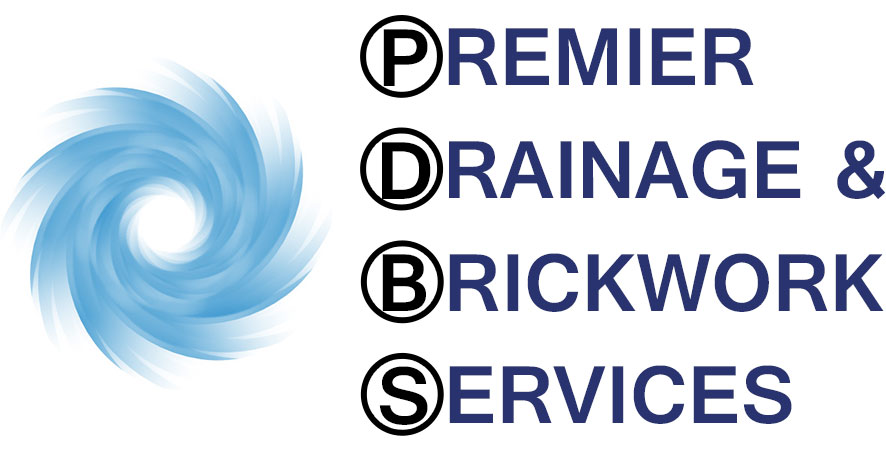Call Premier Drainage Services Today
Call Premier Drainage Services Today
Premier Drainage Services
Form over 30 years Premier Drainage Services have been keeping the drains flowing properly in Hertfordshire and all over the South East. From the unblocking sinks, to installing new drainage systems for our domestic, commercial and Council customers, we’ve done it all.
We pride ourselves on providing a prompt, friendly and reliable service at very reasonable rates. We offer free quotes so, if your drains are in need of any kind of care or attention, why not contact us today.
24/7 Call Out
 Drains seem to have a nasty habit of blocking at the most inconvenient time. Last thing at night, just before you are due to leave for a holiday, you name it! Premier Drainage Services Ltd are here to help with your blocked drains no matter when you need us, day or night.
Drains seem to have a nasty habit of blocking at the most inconvenient time. Last thing at night, just before you are due to leave for a holiday, you name it! Premier Drainage Services Ltd are here to help with your blocked drains no matter when you need us, day or night.
Drain Repairs
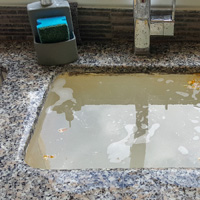
If you have a broken or blocked drain, you need to get it repaired as soon as possible. We will inspect, diagnose and carry out the necessary drain repairs in no time at all. We use CCTV technology to locate the damage, enabling us to repair your drains, getting your water and services flowing properly again.
9.5/10
Drain Clearance
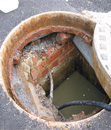 Drains can be blocked by all sorts of things. The most common cause of drain blockages are caused by waste kitchen fats and oils that have been poured down sinks. Other foreign objects such as or silt, dirt or leaves washed into gullies can also accumulate and cause a serious blockage. When Covid first struck a lot of drains were blocked with kitchen roll.
Drains can be blocked by all sorts of things. The most common cause of drain blockages are caused by waste kitchen fats and oils that have been poured down sinks. Other foreign objects such as or silt, dirt or leaves washed into gullies can also accumulate and cause a serious blockage. When Covid first struck a lot of drains were blocked with kitchen roll.
CCTV Drain Surveys
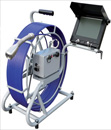 Should you be plagued by a persistent fault in your drains, a CCTV drain survey could be the answer and will allow you to see the problem in full colour on our monitor. The pipe blockage could be anything from a collapsed pipe to a cuddly toy that has somehow found its way around the U-bend. Our CCTV system will enable us to find the problem without having to resort to expensive excavations.
Should you be plagued by a persistent fault in your drains, a CCTV drain survey could be the answer and will allow you to see the problem in full colour on our monitor. The pipe blockage could be anything from a collapsed pipe to a cuddly toy that has somehow found its way around the U-bend. Our CCTV system will enable us to find the problem without having to resort to expensive excavations.
Root Cutting
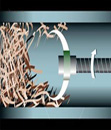 All sorts of roots manage to find their way into drainage systems through joints, fractures and broken pipe work. The roots do this as they seek out the water and nutrients inside the pipes, the roots then form a mass and the hair thin roots that initially entered the system can turn into tap roots that will break the pipe collar as they expand causing major damage.
All sorts of roots manage to find their way into drainage systems through joints, fractures and broken pipe work. The roots do this as they seek out the water and nutrients inside the pipes, the roots then form a mass and the hair thin roots that initially entered the system can turn into tap roots that will break the pipe collar as they expand causing major damage.
24/7 Emergency Service
24/7 Emergency Service
CCTV Drain Surveys
CCTV Drain Surveys
Damaged Drains Repaired
Damaged Drains Repaired
Need help? Call us today!
If you need a rapid response to your drain problem then call us today on 01438 222 758 or fill in our contact form to get a FREE QUOTE.
We provide drainage services throughout Hertfordshire, Bedfordshire, Essex and London.
Need help?
Call us today!
If you need a rapid response to your drain problem then call us today on
01438 222 758
or fill in our contact form to get a
We cover Hertfordshire,
Bedfordshire, Essex and London.
Blocked drains - Drain repairs - CCTV drain surveys - Leak detection - Codicote - Hertfordshire
Codicote is a rather large village, and civil parish about seven miles south of Hitchin in Hertfordshire. Codicote is a sought after location to live, as it has great links to other areas and is a pleasant place to reside. Codicote has some rather glorious timber-framed and chequered brick houses, of special interest being the 18th-century Pond House and the half-timbered Taverners Place which was redeveloped in 2016, previously being the George and Dragon Inn. Codicote Lodge is 18th-century and Codicote Bury 17th-century. The church, mostly rebuilt in 1853, retains 13th-century work in its nave and aisles. A most unusual structure north of the village is the Node Dairy and Stud, erected in 1927. It is circular in design, and thatched, with a circular courtyard and a tower which is, in fact, a silo.
The Codicote landscape
Codicote itself lies on a chalk ridge on the dip slope of the Chiltern Hills. The highest parts of the parish lie in the north and east, most of which is over 380 feet and at one point 450 feet is reached. The Mimram Valley is between about 220 and 250 feet in the parish. On the west side of the river the land rises to about 400 feet at Abbotshay. The river Mimran, or Maran as it was known was once the haunt of the famed angler Izaak Walton, who wrote about his angling exploits in the celebrated ‘The Compleat Angler’.
Early history of Codicote
The first Anglo-Saxon settlements in England were created by the invaders themselves. Later individuals or small groups tended to leave these villages to found other secondary settlements in between. The element ‘-cote’ in the name Codicote is typical of this second phase and so it is likely that Codicote was founded in the later period of colonisation. Thus at some time, perhaps around 600 AD, a man with a name something like Cudda came to the area and founded a settlement. The earliest form of the name is recorded in 1002 as Cuthingcoton, meaning the “cottages of Cuthhere’s people”. A later alternative form of the name was Cudingacotu in which the first element is “Cuda” a diminutive of Cuthhere.
In the year 1002 Codicote enters the written records for the first time when King Æthelred the Unready, its owner, sold it by means of a charter for the sum of 150 mancusae, or 900 shillings of pure gold to his ‘faithful minister’ Ælfhelm. It was described as being ‘five measures of ground’, although nobody really knows how much land that actually was, and known as ‘Æt Cuthingcoton’. Shortly after this it passed to the Abbot and Chapter of St Albans Abbey.
By 1086, the Domesday Book shows its value at six pounds. There were a total of eight hides in the manor, perhaps 960 acres, of which the Abbot’s bailiff farmed three and a quarter hides as the Abbot’s home farm. The rest was shared between a number of tenants, sixteen villeins, three humbler cottagers and one Frenchman, who may have been the bailiff. In addition there were four landless serfs. This suggests a total population of about one hundred people including women and children. There were two profitable mills, which are now known as Codicote Mill and Fulling Mill, some meadow and pasture and some woodland. Fulling Mill Lane on the Codicote side of Welwyn village has a famous trout fly named after it.
St Giles church in Codicote
The Codicote church, with its chapel of the Holy Innocents, was dedicated by Ralph, Bishop of Rochester at some time during his period of office, 1108–1115. Many people visit the Codicote church for purposes of worship or to marvel at its ancient architecture.
Education in Codicote
Codicote Church of England Primary School dates back to 1857 and the current school, on Meadow Way, was built in 1972.
There is no State secondary education provided in Codicote and this is provided by schools in nearby towns with the vast majority of pupils going to Hitchin Boys’ School, Hitchin Girls’ School and Monk’s Walk School in Welwyn Garden City. Private and other schools are also well catered for in nearby towns.
Public houses in Codicote
Public houses in Codicote include The Goat and The Globe both situated on the High Street. There is also the Sports and Social Club off Bury Lane.
Sport and leisure activities in Codicote
One of the most significant developments in Codicote in recent times is the ongoing development of enhanced sports facilities. The current sports field and facilities came about as a result of the death in 1976 of John Clements, a local teacher who died rescuing thirty five children by leading them from a burning hotel. He was subsequently awarded the George Cross. A memorial trust fund was established in his honour which led to the current sports field and a changing facility being opened in 1984 and an extension to changing facilities being added in 2000.
There are currently three main outdoor sports areas and activities in Codicote, which include two football pitches used by two senior teams in Herts Premier League, 1 under 18, 1 under 17, 2 under 11, 1 under 7 team and 2 Ladies teams. Codicote has three tennis courts and a cricket wicket used by up to four cricket teams.
Full planning permission was granted on 30 April 2009 for the £1.7m Sports Hall. The structure includes a sports hall, function room, youth club and changing facilities. The new John Clements Sports & Community Centre was completed in 2011. This allows indoor sports such as 5-a-side football, indoor tennis, cricket nets, bowls, basketball and netball.
Non-League football club Codicote F.C. are one of the senior teams using the John Clements Memorial Ground.
Codicote Tennis Club has three floodlit hard courts and is based at Codicote Sports & Social Centre.
A traditional way of life in Codicote
Codicote, like many traditional villages has an annual Village Day. The one-day festival begins with a parade up Codicote High Street and proceeds to the Sports and Recreation field where there are events, stalls and attractions. The Codicote Village Day is usually held in mid to late September.
The Abbot of St Albans obtained a royal charter from Henry II to hold a weekly market in Codicote in 1267 and four years later in 1271 he obtained the right to hold their annual fair. It was the combination of the market and fair that led to the growth of the present village of Codicote, especially since the village stood at the junction of roads between Hitchin and Bedford, London and Welwyn, and St Albans and Wheathampstead, and thus attracted a large number of travellers.
The market was held on the Village Green and gained a reputation for selling very fine quality cloth. The market may have helped the village grow but unfortunately it also helped spread the Plague in the 14th century, with the deadly bacteria thought to have been carried in bales of cloth.
In 1279 there was an inn that was to become the George and Dragon. The inn catered to pilgrims on the road to St Albans Abbey. The pilgrims might have been better advised to stop elsewhere, as in 1279 the landlord, Hugo Cocks, was fined for bad brewing practices. Manor courts were held here, and the ‘vestry’, an early form of a parish council, also gathered at the inn.
Codicote fights back!
The Codicote villagers took part in the Peasant’s Revolt of 1381. One Codicote native, Stephen Truebody, was executed for his role in the Revolt. The outraged villagers retaliated by burning the abbot’s mill at nearby Codicote Bottom.
Codicote is a village with a strong link to its heritage
Codicote Local History Society is dedicated to researching and spreading knowledge about Codicote’s history. The society has been active for over thirty years; the society ran a wide-ranging series of public events and a few archaeological digs in 2018–19. In 2020 the society published a series of old photos of Codicote under the title ‘Snippets from Codicote’s Past’.
A 2008 BBC programme Christina: A Medieval Life, presented by Michael Wood, focused upon the life and times of Christina Cok, who died in 1348 in Codicote, studying the archives relating to her father’s acquisition of field strips and marketplace property, which she took over in the 14th century. She won a consistory court case over her claim to the rights to her land.

